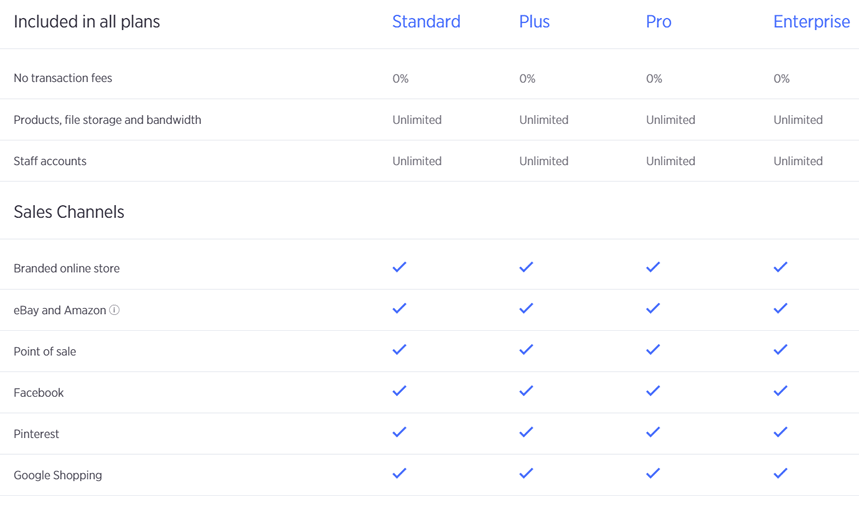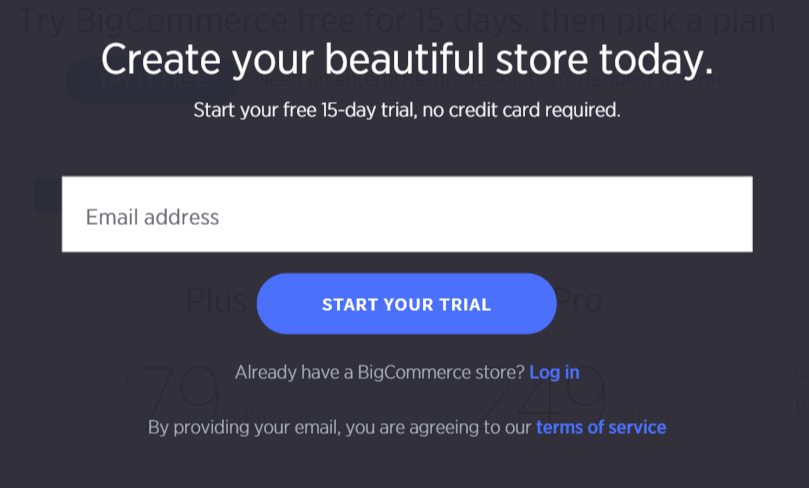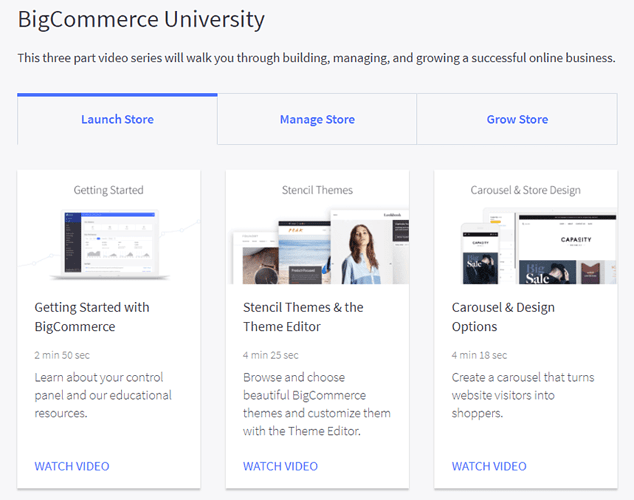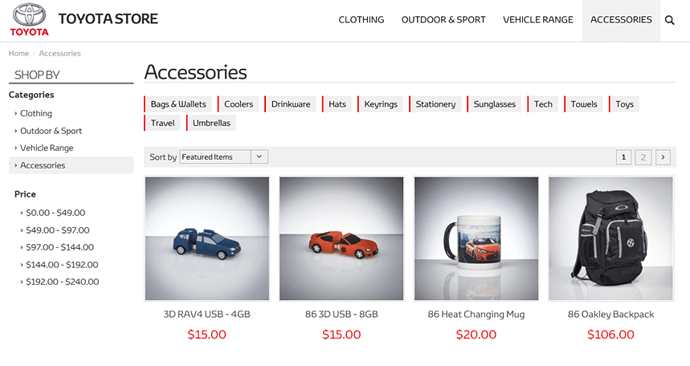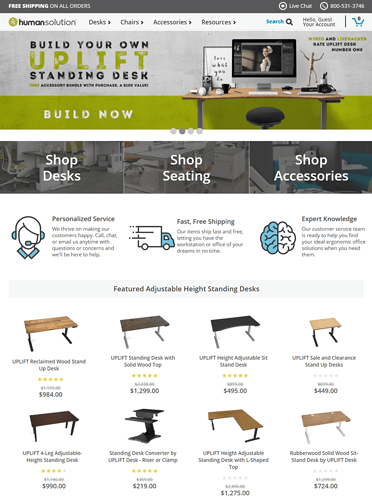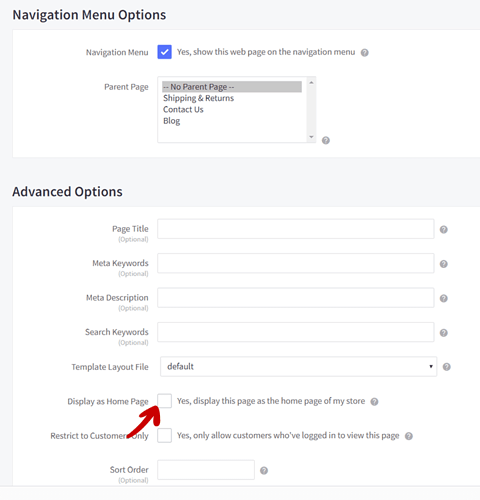They say that if you want to succeed in business, you should think big right from the start. That’s why for my next eCommerce platform review I picked a platform that boasts with quite significant growth statistics of its customers, such as 28% average annual growth of its merchants (what’s almost twice the industry average). But are these statistics, followed by some smart branding practices, enough to make BigCommerce a choice for serious entrepreneurs, who want to invest real money in their business? Let’s find out.
| Criteria | Score | Pros | Cons |
|---|---|---|---|
| Value for money | 9/10 | Great entry-level features | Might be confusing at first |
| Ease of use | 8/10 | No fees on sales | The revenue limit is low |
| Support | 9/10 | Lots of room for growth | |
| Features | 9.5/10 | Support | |
| Flexibility | 9/10 | Freedom | |
| Scaling | 10/10 | ||
| Try Free Today |
Part 1: Introduction to BigCommerce
As usual, the review is split into three different parts. In the first one, I’ll introduce you to the platform itself, go over its major selling points, key benefits, as well as things that I believe could have been done better. In the middle part, you will see how to get started with the platform should you be interested in using it for your online store. The last part is a summary of all the BigCommerce strengths and weaknesses, followed by my personal recommendation.
What is BigCommerce?
Just as the platform’s branding suggests, from the first visit we can clearly see that the company is all about growth. The whole marketing is aimed at those who want to create their online store with the intention of turning it into a real business – so it might not be appealing to complete beginners right from the start.
As one of the biggest players in the eCommerce industry, the platform has processed billions of dollars in transactions and offers one of the most comprehensive sets of services, making it a real eComm hub for all your sales channels.
Of course, just as every eCommerce platform that I’ve tested, it has a few major points that differentiate it from its competitors. Apart from the growth statistics, its major selling points advertised include the best uptime in the industry, (claimed) 1/4th of the cost compared to self-hosted solutions of comparable possibilities and… 0% fees on each sale, topped by some great deals with the most popular payment processors such as PayPal. Sounds impressive? In a minute, we’ll take a closer look at pricing and hosting that comes with each package.
Is BigCommerce exclusively for eCommerce?
But before we jump right into reviewing packages, let me go over one question that gets asked quite often whenever I review an eCommerce platform. Can it be used for projects different than the ones focused on eCommerce? The answer is no.
Just as the name suggests – it’s primary (and only) focus is on letting you create a successful online store and sell your products to your (hopefully worldwide) customers. This approach allowed the company to focus exclusively on the eCommerce industry. Importantly, they are more than happy to share their expertise with their customers.
The name suggests it’s just for big players. Is that true?
Even though the platform seems to be targeting only big eCommerce stores and investors with deep pockets, it offers something for everyone. It doesn’t matter whether you are just starting out or already drive significant traffic to your online store. Keep in mind, though, that its initial plans are priced at a little bit higher price point compared to that of some of its competitors so it might not be the best choice for complete beginners or people who are not going to invest in their store further down the road.
What about pricing and hosting?
Just like the majority of leading out-of-the-box e-shopping platforms, BigCommerce comes with a decent hosting deal, which offers unlimited bandwidth and blazing fast content delivery network. Add to that 99.99% uptime (compared to 99.95% of the industry average), and the promise to keep average response time at around 1/3 of a second, even during holidays or critical events for all online entrepreneurs, such as Cyber Monday.
So, what’s the price one needs to pay to enjoy all those features? Because the platform is aimed at online businesses of all shapes and sizes, company’s offer is made of four different pricing plans. From the initial one, priced at $29.95 per month, all the way to the enterprise one, for which the price is negotiated separately. What’s important, is that they promise to offer a lower price compared to the ones offered by Magento or Shopify Plus for the same level of service.
Another significant advantage of BigCommerce is the fact that all (in my opinion) core features are available in every plan. One of them is lack of any fees on transactions – the platform doesn’t charge you anything for the products you sell. On top of that, each of the plans comes with an unlimited number of staff accounts and products, the ability to personalize the branding and the option to connect all the most important sales channels, including eBay and Amazon, Facebook, Pinterest and Google Shopping.
What’s also important is that all plans include features such as coupons, real-time shipping quotes and professional reporting tools. Usually, those were reserved for the high-end customers:
The initial plan, while priced higher than some entry-level plans offered by competing brands, lacks just a few advanced features, such as abandoned cart saver, customer groups and segmentation, or faceted search. But if all plans include all fundamental features, where’s the catch? A major limitation is a number of yearly sales revenue. It is calculated on a trailing 12-month basis, and the first plan is limited at just $50,000. The limit goes up to $150,000 and $400,000 for the next two plans respectively and is negotiated separately for the enterprise plan.
The good news is, apart from a higher sales limit, there are other perks for choosing a more advanced plan. Most notably, the exclusive credit card rates processing from PayPal. And, as you know, every .1% that you manage to get out of your fees boosts your ROI.
Of course, nobody likes paying before testing the service first. Now that we know what the platform has to offer let’s find out whether we can play with it free of charge, before making the final decision.
Does BigCommerce offer a free trial?
For all those who need to test before they take out their credit cards out, the good news is the platform offers not one but two different trials. The first one is a 15-day-long offer that does not require you to provide your credit card details (which always makes testing a lot less stressful, and most people cancel 1-2 days earlier ‘just to make sure they won’t get charged’). The second plan is an enterprise-grade solution, but to learn more details about it, you need to contact BigCommerce directly.
What’s BigCommerce support like?
When it comes to offering support, there are two ways in which BigCommerce customers can look for help in case of an emergency – their online community forum or their 24/7 support team. There are also a few other options which you can use to educate yourself on running an eCommerce store – but because they are not focused on helping you solve small, ongoing problems (that’s what support is for) I will go over them in the next section.
BigCommerce Community
The place to start before you contact their support team. Remember that even if you manage to get in touch with someone from the team right after you contact them, it’s often much faster to start by looking for an answer on your own – especially if you can do that on a forum as active as BigCommerce’s one.
Thousands of issues are divided into multiple categories related to setting up, managing and marketing the store. All that makes the forum an excellent source of knowledge. And the built-in search engine helps find the answers to your questions within minutes.
BigCommerce Support Team
Of course, sometimes the problems that you come across are too specific to your situation to find a solution in a public forum. In this case, you will want to contact company’s support team. Nowadays, being in touch 24/7 with your customers is a must. Luckily, BigCommerce offers chat, email and US-based phone support round-the-clock.
What’s worth noting is that their phone line is highly professional, and the company boasts 90% first-call resolution of all problems, as well as an average call answer time of well below two minutes. What I believe is a significant strength of the support team is that its members can help you with more than just technical problems. You will get in touch with people who know the ins and outs of the platform as well as with experts ready to answer your questions related to shipping, taxation or conversion rate.
Another thing I find quite convenient is that the company allows you to skip the very annoying search-FAQ-first-before-contacting-us step in just one click:
Voila! You get straight to the list of available contact forms:
Does BigCommerce help newcomers learn new skills?
Even though the brand name might suggest otherwise, BigCommerce is well prepared for all beginners and those who’ll be doing most of the work themselves. Let’s take a quick look at how they can educate themselves.
BigCommerce Guides & eBooks
An excellent source of well-structured, comprehensive information on topics fundamental to building a successful and profitable store. The guides are focused on areas such as keyword research, search engine optimisation, order management, shipping and a few other – all equally fundamental:
BigCommerce University
For those who prefer video to text and are looking for a step-by-step course that will take them from complete beginners to advanced e-store owners, the company prepared a video course called BigCommerce University . It consists of over 40 videos, divided into three different chapters – launching the store, managing it, and growing it. From getting started with BigCommerce, all the way to creating customer groups and setting up Google Analytics.
eCommerce Answers
For those who are looking for an answer to one quick, quite specific question which they’d rather not bother technical support with and which might be too simple to be found on the community forum, BigCommerce has prepared a unique section called eCommerce Answers . As of now, it consists of over 300 simple marketing online commerce questions answered. From simple eCommerce how-tos to questions on marketing and strategy (followed by a glossary).
Note: The biggest drawback of this section is that, while the questions are divided into categories, there is no internal search engine for it.
The BigCommerce blog
Finally, there’s of course company’s blog. What I like about it is that the posts are usually long, comprehensive, and full of examples. Divided into eight different categories, they are another, up-to-date source of knowledge for all customers. And the fact that eCommerce entrepreneurs write most of them, only makes them more educational and relevant for all business owners.
Are there any tools or extra offers available for BigCommerce customers?
Many hosting and eComm platforms provide their users with great deals on things such as autoresponders, accounting software or CRM solutions. What about BigCommerce? Luckily for its users, the company offers a wide variety of deals in many different categories. Some of them are completely free while others come at a reduced monthly rates or transaction fees. Because there are quite a lot of them, there’s no point in listing them here – click this link to view them for yourself!
Is it easy to outsource some of the work?
A question which I usually get when I work with people who treat their online stores as an additional investment and not their main business. The answer is yes, but there’s a catch. Because it’s not as popular as online stores based on WordPress or Magento, there are not as many qualified specialists to choose from. Luckily, the platform gives you the access to over 400 partners, who can help you set, manage and grow your store.
What if I want to work on my own? Do I need coding skills or anything like that to set up the store?
Not at all. While understanding how online marketing works is recommended, you don’t have to worry about any technical skills such as coding. The platform offers thousands of templates, which are very easy to customise thanks to their intuitive Style Editor (no CSS required). To prevent beginners from applying accidental changes, all edits can be previewed in real time.
Moreover, all BigCommerce stores are ready for mobile users out of the box and come with optimised online checkout and great built-in eCommerce analytics. You will see how easy it is to get started in the second part of my review.
What about security? Is BigCommerce a safe platform?
I believe security in online commerce is a necessity. If you are not securing your store and the data of your customers, you might as well not run any business at all. First, the safety of transactions is one of the primary things potential customers look at before making a purchase decision. Second, some of the safety measures are required by law.
When it comes to security, the platform is no different from its top competitors – it has all the top-grade features, such as Level 1 PCI compliance, multi-layered security (intrusion detection software, file integrity scanners, server-specific firewalls), topped by 24/7 human monitoring. All plans come with HTTPS protocols, and, on top of that, enterprise-grade customers receive DDOS protection normally worth up to $5,000/month on other platforms.
Five (big and small) brands that use BigCommerce
With all its great features followed by affordability, it’s no surprise the platform attracts both big players and small eCommerce entrepreneurs. Below are five examples that may (or may not) encourage you to give the platform a shot.
Toyota Australia (http://shop.toyota.com.au/ )
Apart from being one of the biggest car manufacturers in the world, Toyota is the brand with the biggest market share in Australia. Of course, while I’d love to say that that’s all thanks to their online store where they sell hundreds of cars on a daily basis, that’s not the case. Because they don’t sell there any cars at all. At least not the ones which you can use to get to work.
The store is used exclusively to sell Toyota’s merchandise. According to the company representatives, the most important aspect of the platform is convenient store management features, followed by reporting and analytics capabilities. All this allows the team responsible for the store to focus on marketing, without any unnecessary micromanagement. And the cars? Thanks to how clean and intuitive the store is, you’ll quickly find your RAV4. But, let me warn you – it might be too small to get into
Travelpro (https://www.travelpro.com/)
The next store is an excellent example of a clean, professional eCommerce store. Travelpro is an internationally-recognised travel bag manufacturer. Their offer is divided into easy to navigate categories indicating the purpose of the purchase – such as carry on, check-in, backpacks, and laptop. The store is integrated with the brand’s Instagram, which features photos of travellers who use company’s products on the road.
KodakPhones (https://www.kodakphones.com/us/ektra/)
Who doesn’t know Kodak? While they are no longer the giant they once were, their revenue is still well over $1 billion. Of course, only a small slice of that comes from their online store. Nevertheless, having such a big company portfolio is a great trust indicator for BigCommerce. And KodakPhones homepage is an excellent example of what an attention-grabbing landing page looks like. What’s interesting is that the whole store is dedicated to one product and a few of its accessories.
ToyWiz (https://toywiz.com/)
Another interesting store hosted on the BigCommerce platform is ToyWiz. The company sells ‘everything that’s hot’ when it comes to toys or card games. Most of its product offering consists of branded toys featuring celebrities, movie characters or cartoon characters. While the company’s homepage might look a little bit old-school, the way each product categories (and product themselves) are presented is very appealing and easy to navigate. Moreover, every visitor is presented with three crucial things that might significantly increase conversion rate:
- A coupon
- Security certificate
- Authenticity Guarantee
- Link to real customer reviews
Human Solutions https://www.thehumansolution.com/
The last store is an interesting example of what a clean design, intuitive call-to-actions and benefits presented above the fold can do to boost customer experience. Right after visiting, potential customers know what the store is about (just three main categories make it easy to show them both in the sidebar and the CTAs). All that is followed by a list of products, giving potential customers convenient access to the store’s offer.
The big names present in company’s portfolio fit the company’s branding well. But what’s even more important is that on top of that, the company does a lot to make the whole process of setting and managing the store as intuitive as possible. This helps attract those with a much smaller budget and less experience. In the next part, I will go over the process of signing up for a trial account, followed by checking out all the basic options to verify whether the platform is as easy to start with as the information on the site suggests.

